Fractional NFT for Property Ownership: Transferring the Asset
Recap & Introduction
In the first article of this series Fractional NFT for Property Ownership: Minting the Token, we demonstrated how an NFT representing ownership of a property may be fractionalized for multiple co-owners and represented using ERC-20 tokens.
This article focuses on how co-owners of a fractionalized property may make a claim of their share of revenue when the property is sold. The source code for the Fractional Claim contract used in this project is here.
Finding a Buyer
Here's the scenario - the property owner seeks a buyer for the property co-owner by 2 other fractional-owners. From the first article, this property is co-owned by 3 persons:
- Property Owner: holds the NFT, linked to its title deed on IPFS and 1 fractional token, representing 1 share of the property
- Fractional Owner 1: holds 2 fractional tokens, representing 2 shares of the property
- Fractional Owner 2: holds 1 fractional token, representing 1 share of the property
The potential buyer comes along and asked to see the FNFT token that represents the property, linked to its title deed on IPFS.
He reads the FNFT token contract and noted that there are 4 FNT tokens associated with the FNFT token.
He refuses to proceed with the purchase of the property because buying this property in its current state means co-owning the property with all its existing fractional owners.
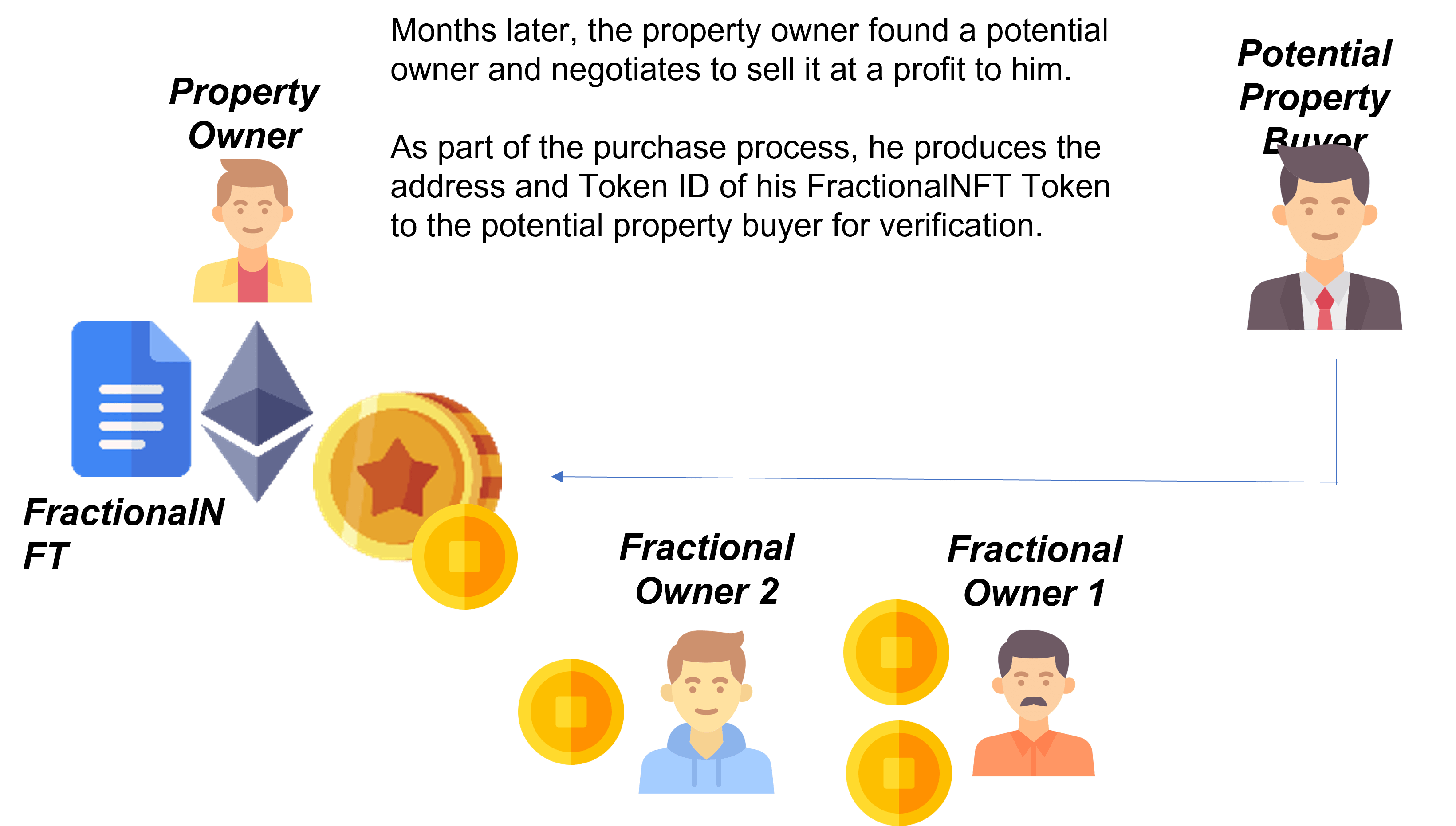
Here's how the negotiation might play out.
Property Owner: Here's the Fractional NFT Contract and the FNFT token representing my property. Would you like to buy it for 1ETH?
Potential Buyer: Hang on, let me take a look at the contract and token on Etherscan. Hey, I noted that there are 4 FNT tokens associated with your property. What are these?
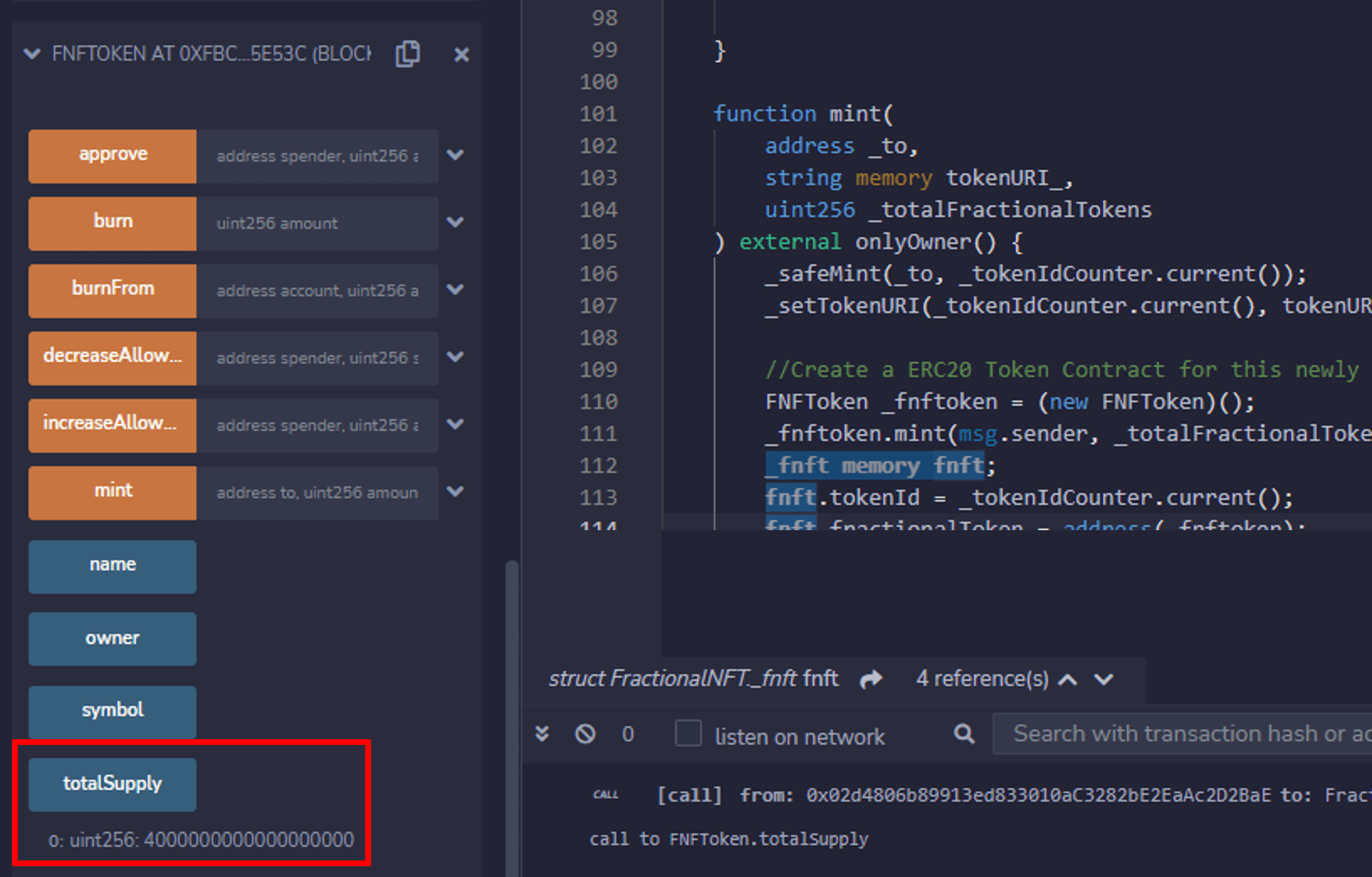
Property Owner: Oh, those are my co-owners. I own 1 FNT, and the other 3 FNTs are owned by 2 other persons. You can find their wallet addresses on Etherscan, registered as FNT owners of the other 3 FNTs. Based on the FNT that each of us owns, I have 25 percent ownership, and the other 2 guys collectively own the other 75 percent.
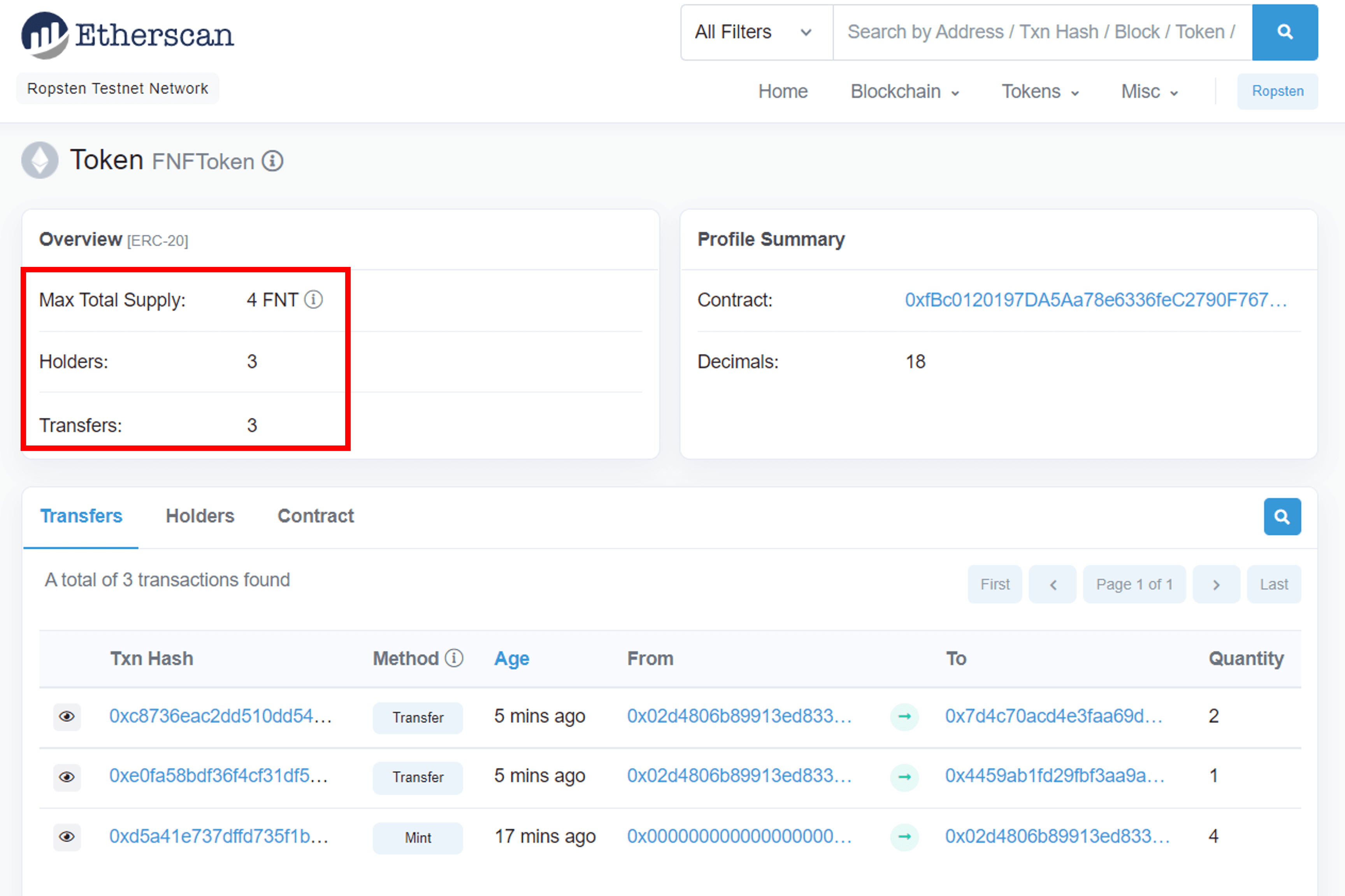
Potential Buyer: Err, then have you spoken to them about this deal?
Property Owner: I can simply transfer this NFT to you after you have paid me. Then you go talk to them.
Potential Buyer: No way I will buy this property in its current state because if I do so, I am going to inherit your responsibilities to your co-owners. For example, if I want to tear down the building or re-sell it, I will need their permission.
Property Owner: So what would you like me to do?
Potential Buyer: Go speak with them to get them to sell their shares of the property back to you. We will talk again.
Property Owner: Hokay!
Requesting Redemption of FNT Tokens
The Property Owner goes back to speak with the other 2 fractional owners of the property to negotiate a buy-back of their FNT tokens.
He explains that he has a potential buyer for the property at 1 ETH, and that if they are collectively agreeable, then he would begin a Fractional Claims process.
Let's assume that they are happy with the price that the property will be sold.
The Property Owner then deploys a Fractional Claim Smart Contract.
The source code for the Fractional Claim contract is here.
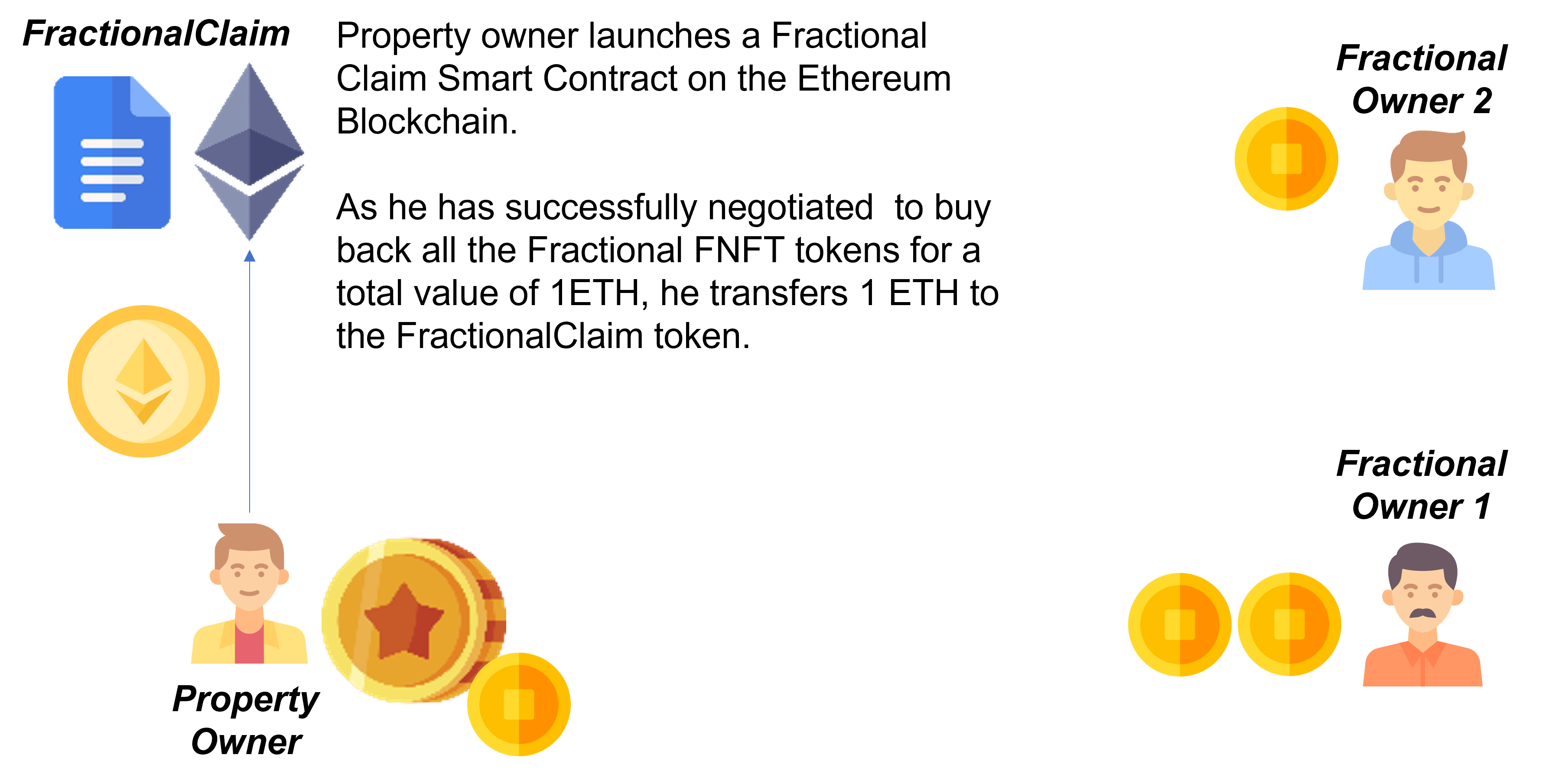
The fractionalClaim.sol contract is compiled.
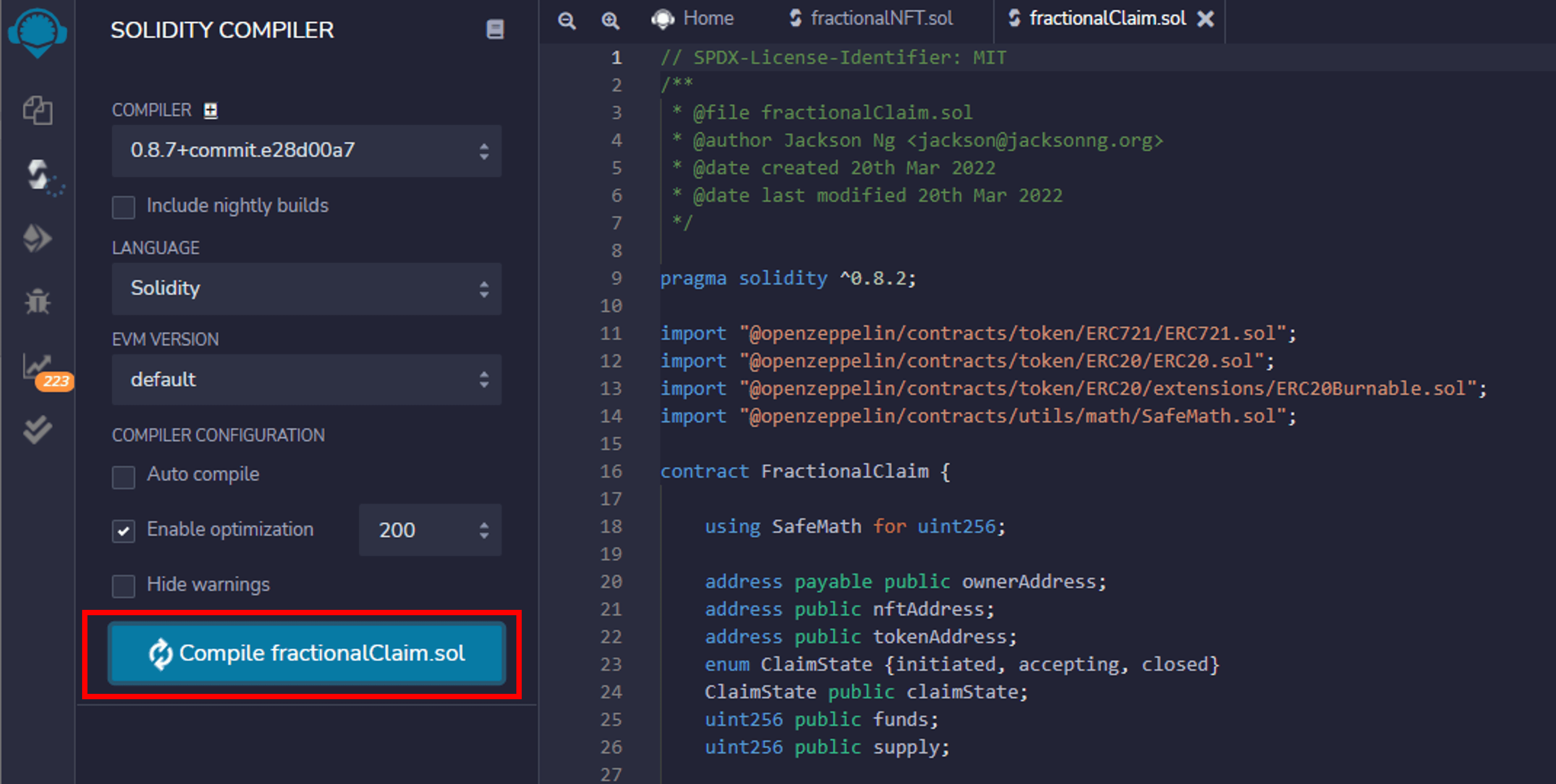
Enter the Fractional NFT Smart Contract Address and the Token ID representing the property. Click [transact].
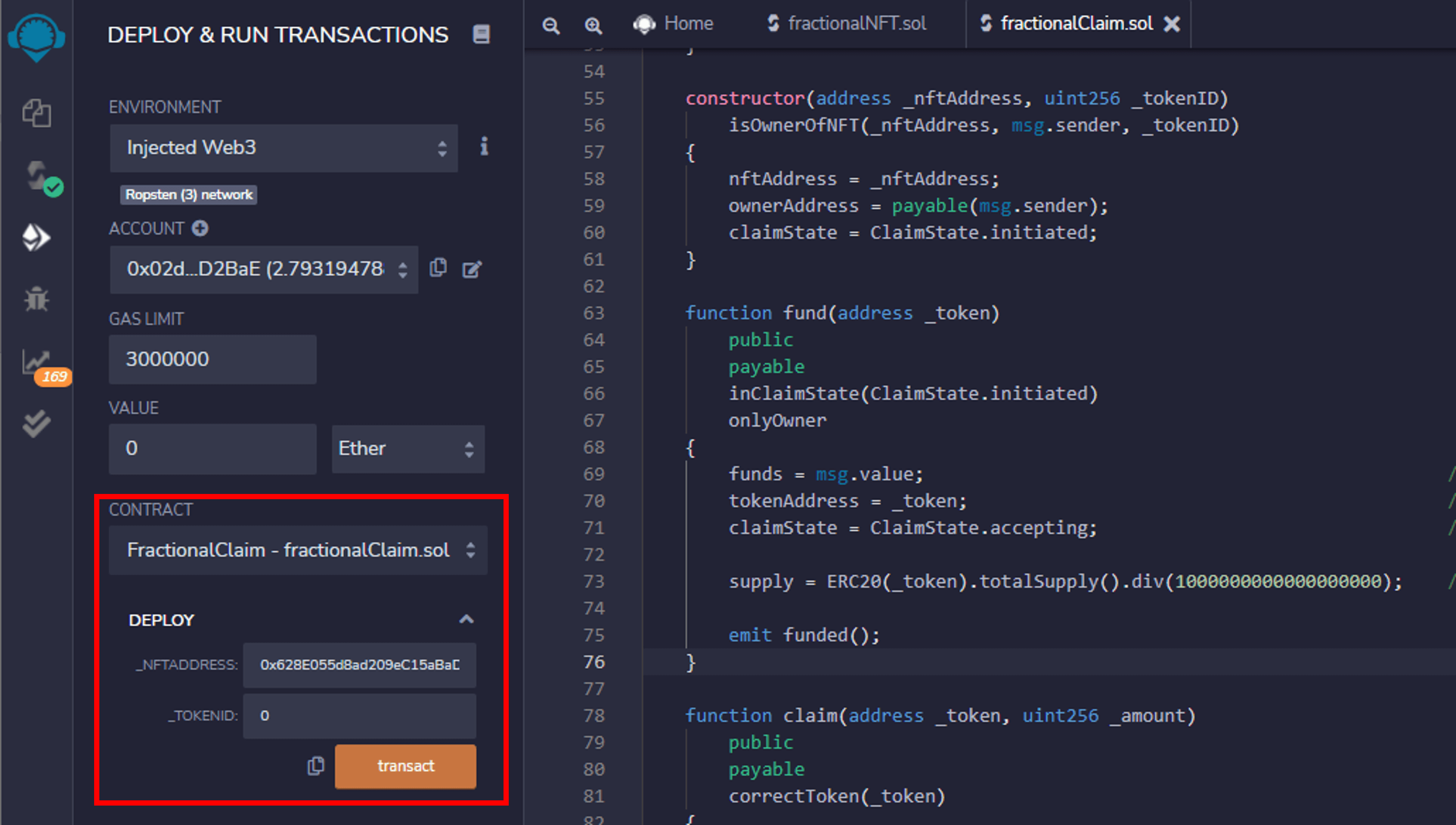
The Property Owner will "buy" back the FNT tokens from the fractional owners.
To do so, he deposits 1 ETH into the Fractional Claims Smart Contract. In doing so, he provides the Smart Contract address of the FNT token to be claimed against. Click [transact].
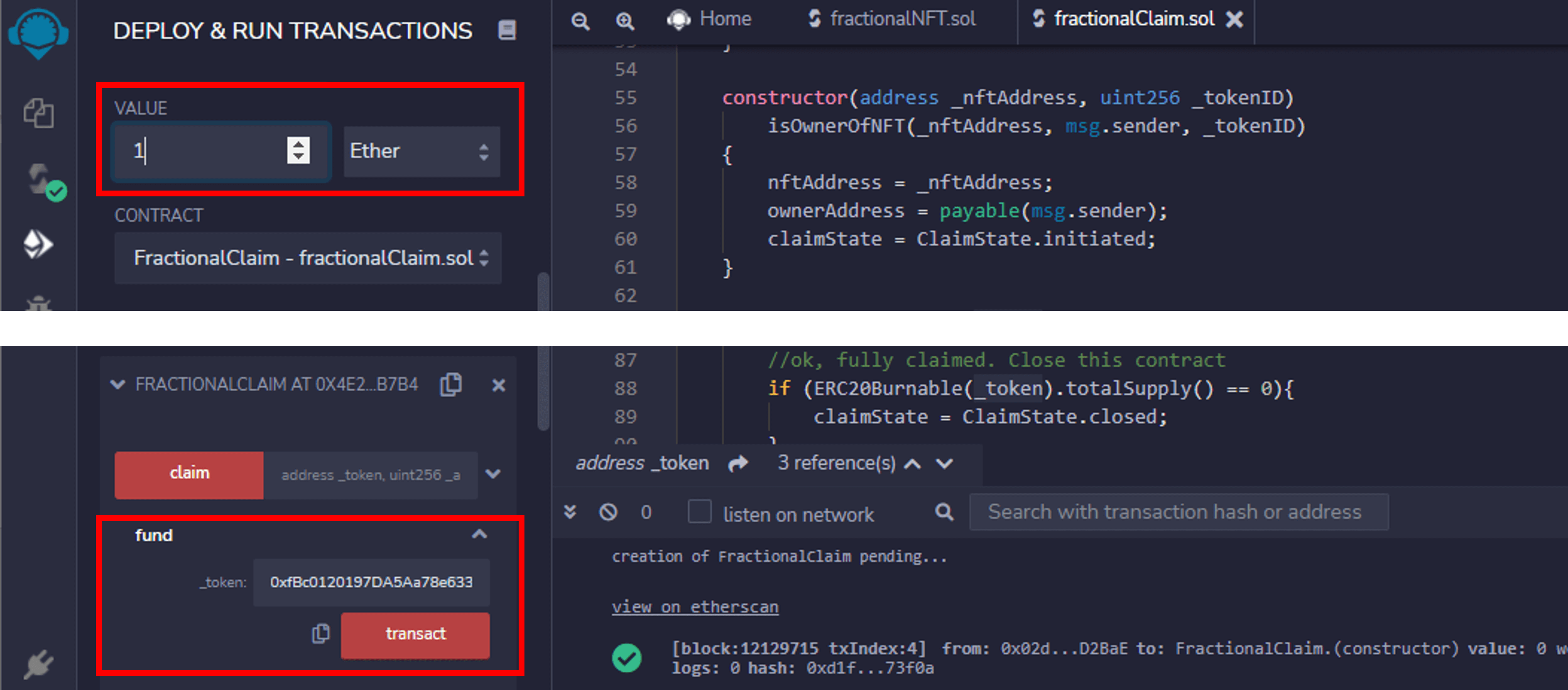
Redeeming FNT Tokens for ETH
The Property Owner then informs his fractional owners that he has activated a Fractional Claims Smart Contract and they can now exchange their FNT tokens for their share of ETH using the Smart Contract.
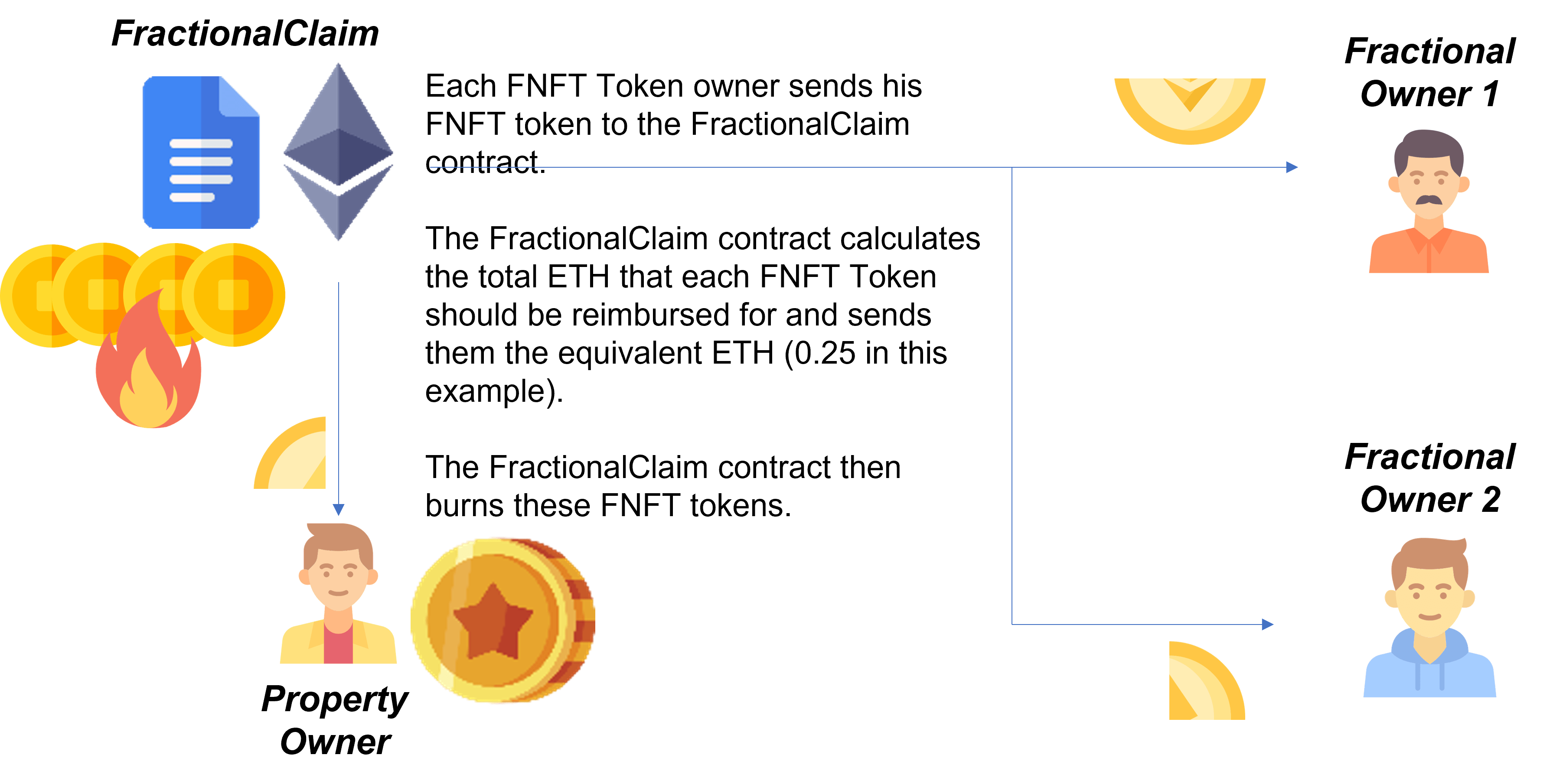
To do so, each Fractional Owner must first give permission to the Fractional Claims Smart Contract to interact with his FNT Token.
He goes to the FNT Token Smart Contract and enters the Fractional Claims Smart Contract address. He also enters the total amount of FNT tokens that he will be redeeming.
In this example, a fractional owner is redeeming 1 FNT, thus he enters 1 x 1018 in the amount field. Click [transact].
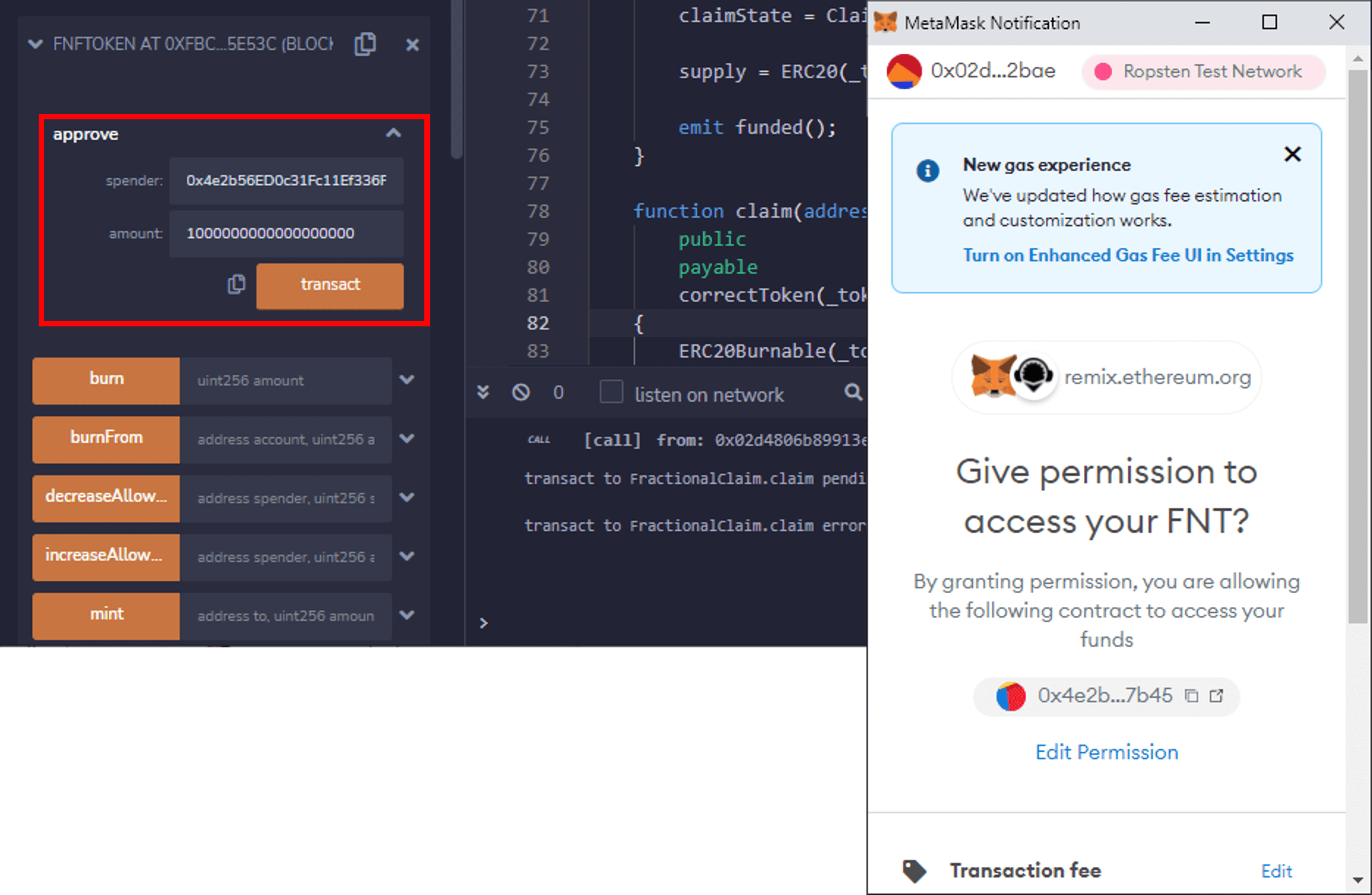
At the Fractional Claims Smart Contract, he enters the Smart Contract address of the FNT token and the amount that he is redeeming.
The Fractional Claims Smart Contract takes his FNT tokens and burns them. It calculates the total ETH that he is entitled to and sends it to him.
The table below documents the ETH that each co-owner will receive when they redeem their FNT tokens.
| Person | FNT Tokens Owned | ETH Entitled |
| Property Owner | 1 | 0.25 |
| Fractional Owner 1 | 2 | 0.5 |
| Fractional Owner 2 | 1 | 0.25 |
Back to the Negotiation Table with the Buyer
The Property Owner goes to speak with the Buyer again. Here's how the negotiation may go:
Property Owner: I have redeemed all the FNT tokens. Here's the Fractional NFT Contract and the FNFT token representing my property again.
Potential Buyer: Let me take a look at the contract and token on Etherscan. I will also take a look at the FNT tokens associated with your property. Ah, no more FNT tokens!
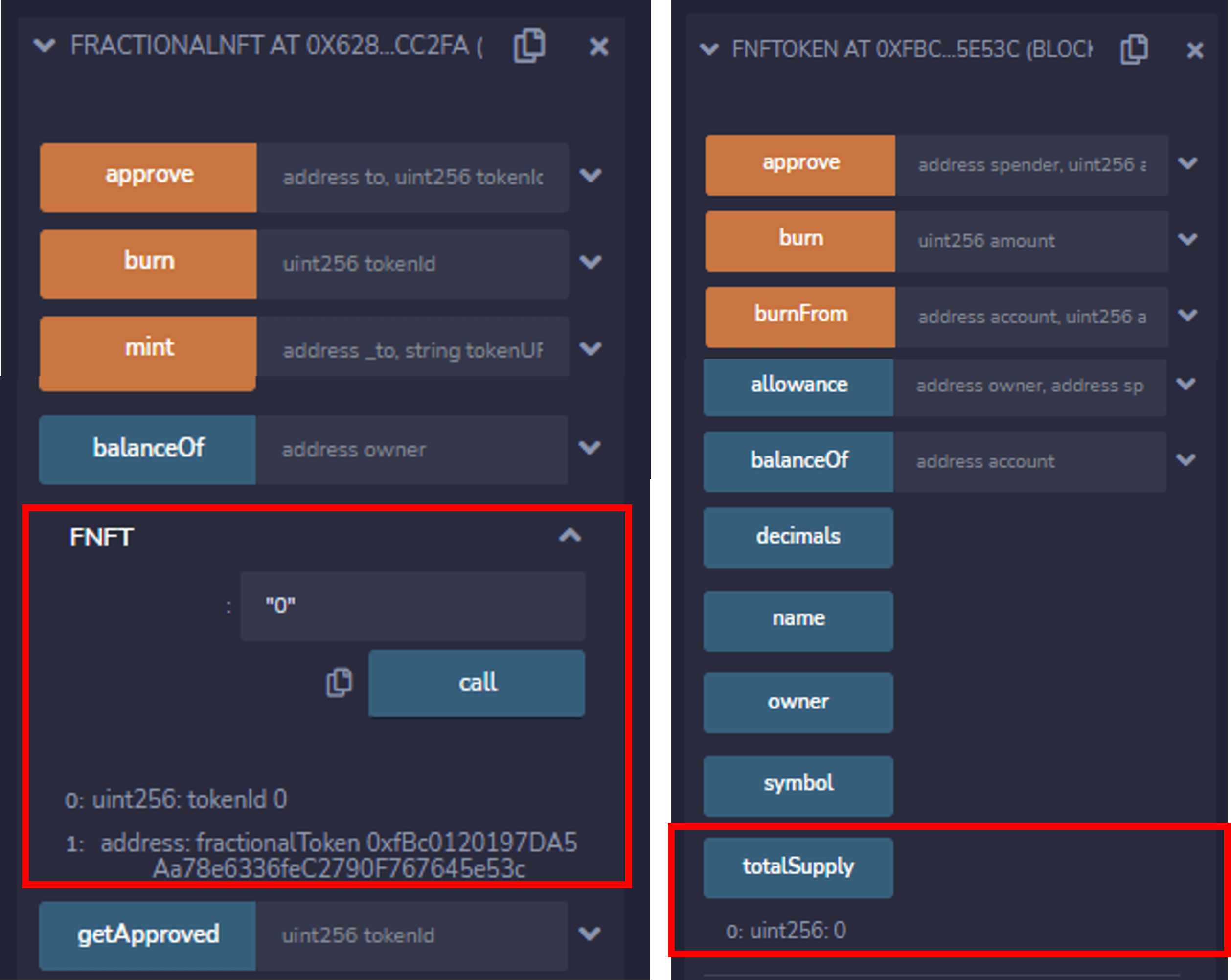
Property Owner: Yup, I have redeemed them all. Now I am the sole owner of this property. There is now no one else to deal with other than me.
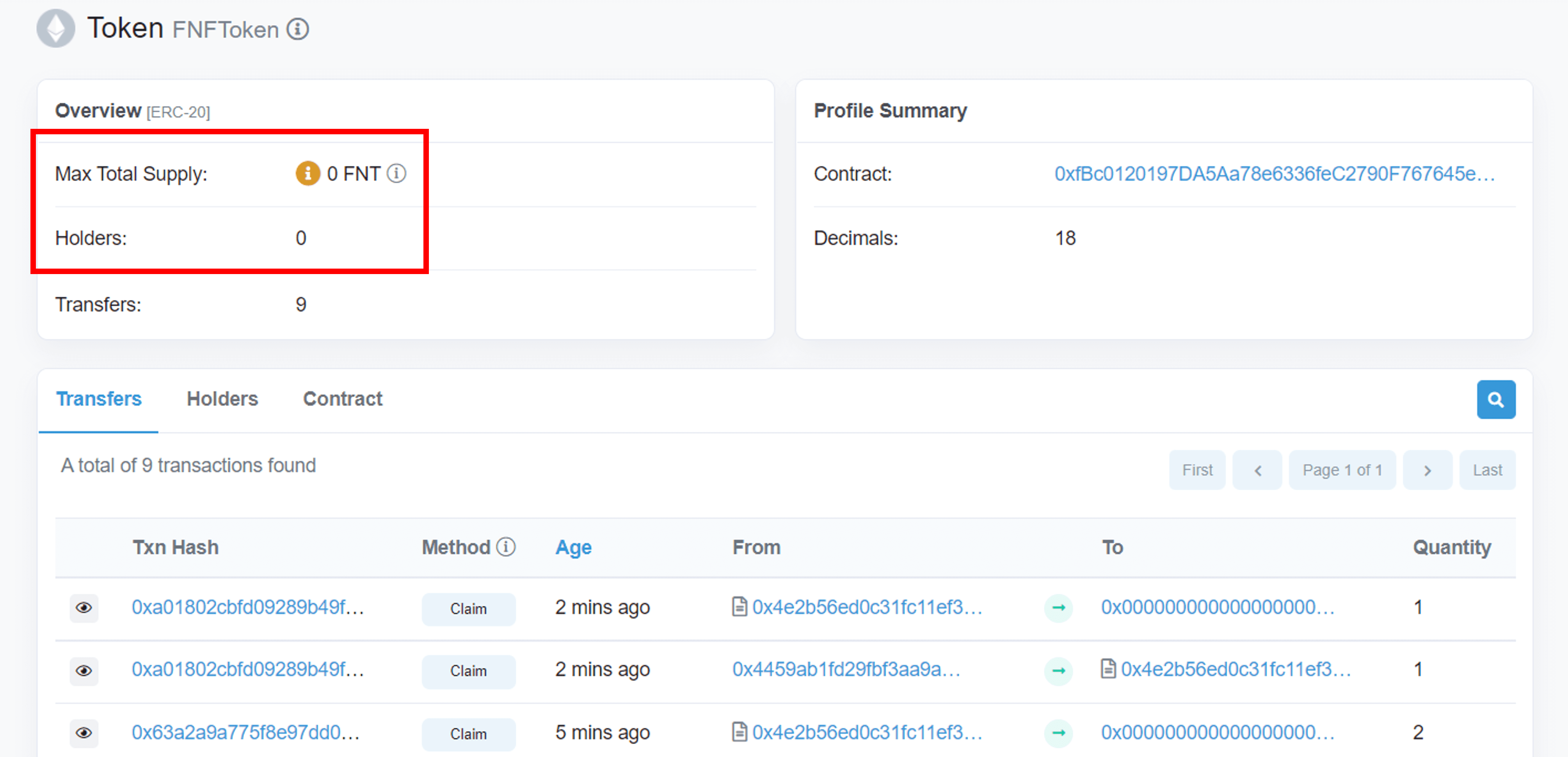
Potential Buyer: OK, let's proceed to deal with using an NFT Escrow Smart Contract.
Property Owner: Hokay!
Post Mortem
In this article, we have demonstrated how a potential buyer will examine the property's NFT so that he does not inadvertently purchase a property that is still co-owned by someone else. We also demonstrated how the property owner may use a Fractional Claims Smart Contract to facilitate his property's fractional owners' redemption of their share of the property for ETH.
Readers who are familiar with Equities on the Stock Market will notice the similarity between this and the traditional process of taking a publicly listed company private. In the process of delisting a public company, the company negotiates a price where it buys back all its publicly traded shares so that it regains full ownership of the company to do whatever they wish with it.
This will work just as well for collective-property sales (also known as en-bloc sales).
Even for bond redemption!
Indeed, a Smart Contract on the Blockchain is no more than the automation of processes that would otherwise have to be administered by intermediaries like the Stock Exchange, brokers, and investment banks for a (sometimes very exorbitant) fee!
What's Next?
In the next part, we will examine the Solidity Smart contract codes behind this process as well as how its logic caters to the various What-Ifs such as "What If the Fractional owners refuse to sell?" and "Couldn't a property be sold without the fractional owners' agreement?".
Stay tuned!
- Fractional NFT for Property Ownership: Minting the Token
- Fractional NFT for Property Ownership: Transferring the Asset (this part)
- Fractional NFT for Property Ownership: Solidity Codes Explained
Stay tuned!
If you enjoyed this tutorial, perhaps you may also wish to read:
- NFT Escrow Service: How NFTs may be bought and sold between parties.
- NFT-Based Luxury Watch Certificate: An Implementation of an NFT-based luxury watch certification system
- Introducing the Ethereum Development Environment: A step-by-step guide to setting up a development environment for building Decentralized Apps in Ethereum.
- Freelancer Smart Contract: A payment system between a freelancer and his client to ensure both delivery and payment.
- Ropsten Ethereum Faucet: I built an Ethereum faucet to give out ETH on the Ropsten network.
- Voting on a Blockchain: An implementation of a Voting DApp on Ethereum.
Photo by Olav Ahrens Røtne on Unsplash
Man icons created by Good Ware - Flaticon
Coin icons created by Freepik - Flaticon


